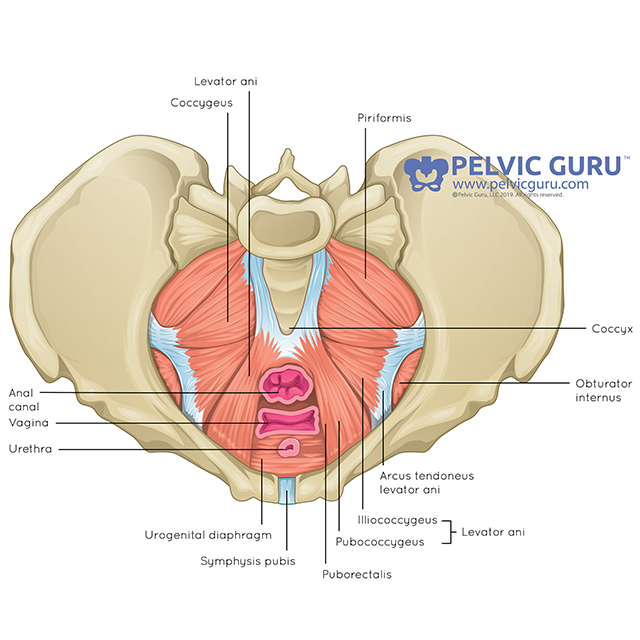Okay everyone, we really need to discuss the elephant in the room, and that is peeing yourself.
How many of you have heard or been told that a little leaking when you laugh, cough, or sneeze is “normal”? Or that you just have to deal with this after you have babies? Or that it’s okay if it happens when you lift heavyweights? Or that it’s a normal part of aging? How many of you are really okay with living like this?
What if I told you that while this is common, this is NOT normal, but that this is also something that can be improved, or even fixed? It may sound too good to be true, given that we ALL know someone who has this issue. And it happens to 30-50% of women. However, common does not equal normal! Note that the incidence goes up for high-impact athletes, > 50% of ballerinas and gymnasts report stress incontinence.
 Stress incontinence can occur for several reasons: pelvic floor muscle weakness, pelvic floor muscle overactivity (this is actually quite common and a big reason that the answer to urinary leakage is not just to do Kegels!), lack of coordination of the pelvic floor with other core muscles, lack of control of intraabdominal pressure, and even posture. Other factors can include stiffness in the spine or trunk muscles, abdominal scar tissue, and less commonly problems with the bladder or urethra. Urinary leakage can occur with things like laughing, coughing, sneezing, and lifting. In order to understand how to prevent this, we need to understand our anatomy and how our bodies are supposed to function.
Stress incontinence can occur for several reasons: pelvic floor muscle weakness, pelvic floor muscle overactivity (this is actually quite common and a big reason that the answer to urinary leakage is not just to do Kegels!), lack of coordination of the pelvic floor with other core muscles, lack of control of intraabdominal pressure, and even posture. Other factors can include stiffness in the spine or trunk muscles, abdominal scar tissue, and less commonly problems with the bladder or urethra. Urinary leakage can occur with things like laughing, coughing, sneezing, and lifting. In order to understand how to prevent this, we need to understand our anatomy and how our bodies are supposed to function.
The pelvic floor muscles (PFM) sit at the bottom of the pelvis (and yes, men have a pelvic floor, too!). They look like a round bowl of muscles, extending from the front pubic symphysis to the tailbone in the back and from side to side, connecting with the hip muscles. One of their roles is to contract when pressure in the abdomen increases, like with laughing, coughing, sneezing, or weight lifting. This muscle contraction supports the pelvic organs including the bladder and it squeezes the urethra to ensure that urine does not come out during one of these activities. When your pelvic floor muscles contract (think kegel), they send a signal to your bladder that it should relax at this time, keeping urine inside the bladder. The opposite occurs when toileting: the pelvic floor muscles relax and the bladder muscle contracts to empty the bladder. Stress incontinence is more common in women because the pelvis is wider, requiring more effort and support from the muscles and other connective tissue structures like fascia and ligaments. The number of openings is also different, also contributing to different biomechanics and a mechanical advantage for men. Some men do have stress incontinence (or gas or fecal incontinence), and benefit greatly from PT.

Image used by permission of Pelvic Guru, LLC.
So should you just do Kegels to strengthen the pelvic floor and prevent leakage?
Actually, that’s not usually the answer for two main reasons. One, 3 out of 4 people actually do Kegels (pelvic floor muscle contractions) incorrectly without personalized instruction. Even when taught verbally, most people struggle to get the pelvic floor muscles to effectively squeeze and lift in coordination with the other core muscles. Secondly, the majority of people that we see with urinary leakage actually have some pelvic floor muscle overactivity. The muscles lack the ability to fully relax, which can leave them a little cranky and without the ability to replenish their metabolic needs to then contract effectively when they are needed for that giggle or sneeze or lift. Sometimes they are tender when overactive, and sometimes not. In any case, learning to fully relax and release tension in these muscles often resolves the urinary leakage. They need to be strong and coordinated and have the ability to relax completely, just like other muscles in our body.
Wait, there’s more!
You know we like to talk about breathing here at Integral PT. The PFM function best when we breathe during core muscle contraction, as opposed to holding our breath (e.g. performing the Valsalva maneuver, often seen with weight lifting). When we exhale, we allow pressure to escape from the abdomen, which decreases pressure on the bladder. When we hold our breath, pressure increases, which also puts increased pressure on the bladder which may exceed the level that the PFM can control. To be really technical, there are times when a Valsalva is okay and helps with maximizing trunk stability through pressure support: for lifting really heavy loads when the PFM and other core muscles are working together well and there are no symptoms such as leakage.
So, how do you fix the leakage?
The BEST answer is to see a pelvic floor physical therapist! There are many factors that can be involved in urinary leakage and the best thing you can do for yourself is to see an expert that can do a full evaluation to assess what factors are involved in your case and what treatments will work best for you. While you are looking for the right therapist (WE would love to see you, but we understand if you can’t make it to us!), here are a few things that you can try to improve your stress incontinence.
1. Breathing: for lots of information on breathing, see our previous blog posts here and here. Then consider whether you are breathing with your upper chest primarily rising and falling, or if you are using an umbrella pattern (diaphragm rise/abdominal rise with lower ribcage expansion up and out). Watch this video for a visual guide, then practice and improve the umbrella pattern.
2. THE KNACK- The Knack is a way to reteach your pelvic floor muscles to contract when you need them to. Right before you laugh, cough, or sneeze (sometimes this is hard to time), do a kegel (pelvic floor muscle contraction) by squeezing and lifting the muscles around the urethra, vagina, and anus together as you exhale. This will tell your bladder to relax and help to prevent urine from leaking. You can also use this while pushing, pulling, and lifting. Or even while rolling over in bed if that triggers a little leak. The key is to continue exhaling through the movement as you keep your core and pelvic floor engaged. Julie Wiebe coined this “Blow Before You Go“, and we love this idea. Remember to exhale then move. It’s totally fine to cross your legs, do a combo of a leg cross plus a hip shift, or anything else that helps in the meantime. These are good strategies if you have a cough that lasts for days or weeks that really challenges the pelvic floor.
3. Maintain a healthy weight- Studies show that weight loss can help if you are overweight.
4. Decrease caffeine intake- Studies show that excessive caffeine (more than a couple of cups of coffee per day) can cause detrusor instability, although everyone’s level of sensitivity to caffeine is a little different. Consider experimenting with this if you have caffeine in your diet.
5. Avoid constipation- a full rectum presses against the bladder, which can challenge its ability to retain urine. If you have chronic constipation, know that this is something that we also frequently help patients with. Drinking enough water and having the right balance of fiber in your diet are great places to start. Also, consider a squatty potty. More on constipation coming in the next post, stay tuned!
Don’t get discouraged if you do not see immediate results, but find a pelvic floor physical therapist to help guide you. We treat people of all ages and stages who struggle with this, and the great news is that no matter how young or how old, how sedentary or how athletic, significant improvement can be made! Now, let’s stop peeing ourselves!
Reach out here for a free 15-minute phone consultation if you have questions about your urinary leakage.





